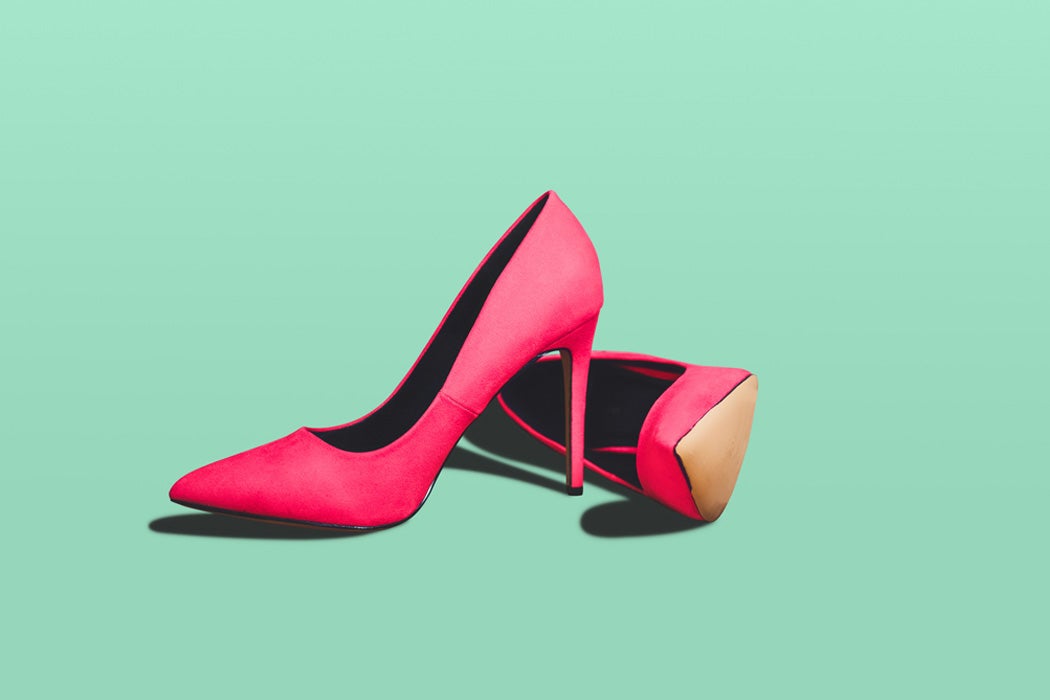If your high heels could talk, suggests Summer Brennan in her new book High Heel, they’d give you an earful. For Brennan, high heels are the stage setting for a drama full of sex, prestige, and identity. Her book joins a venerable tradition of authors who acknowledge the shoes’ inherent drama—and the ways in which they both bind and bolster their wearers.
Eighty-six years before Brennan’s book, Alice Huver, a student nurse, weighed whether women should opt for heels or lower-heeled shoes in an actual play that pits high-heeled fashion against common sense. “Dame Fashion, a spike-heeled, close-fitting, short, flashy shoe” spars with “Common Sense, a broad, low-heeled, comfortable-looking shoe” in the 1933 drama, which is meant to be performed by two women sitting inside large shoes.
“The Care of the Feet: A Tragedy” is a brief, pithy play—and betrays Huver’s anti-heel bias. While Dame Fashion brags about the attention she snags with her ability to confer “a neater appearance and more grace and attractiveness,” she’s countered by Common Sense who is all too aware of the physical pain of wearing heels. Her wearers are eager, healthy, and “full of pep.”
Huver, in the guise of Common Sense, bemoans the physical effects of heels, from improper weight distribution to ligament strain, and upholds common sense shoes as a way to keep feet warm, dry, and naturally situated. Common Sense, it seems, also dictates daily foot care: a soapy wash, a good rinse, careful drying and contact with clean hose and shoes.
After hearing a litany of her sins from Common Sense, Dame Fashion counters that at least she looks good. “In some ways,” counters her low-heeled sister, “but who cares for an individual who is dressed in the height of fashion, but whose expression and posture says: ‘I am so fatigued, my feet are killing me.’” As the play ends, Huver implies that people will keep buying heels nonetheless.
Once a Week
The coup de grâce is the last moment of the drama, during which the woman who plays Common Sense pops out of her shoe and leaves the stage smiling. “DAME FASHION, after painfully climbing from her shoe, slowly and with a sad, weary expression and a droop to her body, makes her exit,” Huver concludes. Presumably, she’s limping along on her painful heels—or maybe holding them in her hands in a surrender to the pains of fashion.
As Brennan writes of the shoes in High Heel: “They are a part of our costume in both the quotidian and theatrical sense…And because the stories that shoes tell are invariably about public life, they must also be about status, and power, or the lack of it.”







